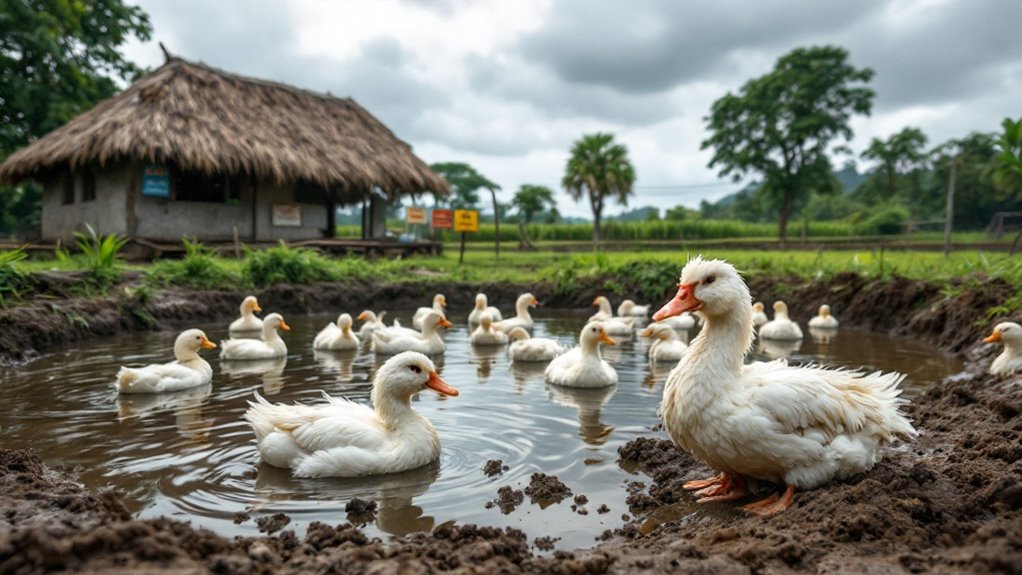Thailand faces a significant flood threat this Friday as intense monsoon rains are forecast to impact northern, central, and southern regions, with areas like Nakhon Sawan, Phichit, and Phitsanulok at particular risk. The ongoing vulnerability of local communities, agriculture, and essential infrastructure is heightened by inadequate disaster management systems and rising climate change pressures. Residents should expect possible flash floods and broad disruptions, while authorities contend with strained emergency resources. Additional details highlight the broader implications and preparedness measures.
Flooding represents a persistent and significant hazard in Thailand, affecting the nation’s population, economy, and infrastructure on a recurring basis. Historically, the country has experienced frequent and severe flood events, with the northern floods of 2025 standing out as the most devastating in 80 years. These floods inflicted extensive damage, particularly in the northern, central, and southern regions, which are most vulnerable during the annual rainy season.
Flooding remains a relentless threat in Thailand, causing widespread damage to communities, infrastructure, and the economy year after year.
The economic consequences are substantial, impacting property, infrastructure, and agriculture, as flooding often results in billions of baht in damages each year and reduces Thailand’s gross domestic product by a measurable margin. GDACS provides a platform for international collaboration in disaster management, helping to enhance coordination among agencies during such large-scale flood events. Recent flooding was caused by storms with heavy rains and strong winds, which led to the displacement of residents and widespread property damage.
In May 2025, authorities issued a green flood alert for several central provinces, highlighting the ongoing risk. The Thai Meteorological Department warned of an increased threat of flash floods from May 13 to 17, affecting provinces such as Nakhon Sawan, Phichit, and Phitsanulok. Over 1,244 residents were directly impacted in recent incidents, with 204 houses sustaining significant damage.
These figures demonstrate not only the immediate risks posed by seasonal storms but also the wider, long-term challenges facing communities in flood-prone areas.
Climate change is expected to worsen these conditions, increasing both the frequency and intensity of flood events. Scientific projections indicate that a global temperature rise of 2°C could result in at least a 30% increase in Thailand’s flood-affected population, with northern and southern regions remaining particularly susceptible.
Thailand is ranked among the countries most at risk globally due to its exposure to these climate-driven hazards.
Floods also disrupt agricultural production, damaging millions of hectares of farmland annually and causing significant losses to both local economies and national GDP. The damage extends to property, infrastructure, and personal assets, compounding the economic impact.
Despite the severity of flood risks, Thailand’s disaster response infrastructure remains inadequate. Weak warning systems and insufficient rescue operations have led to preventable losses.
The persistent recurrence of natural disasters underscores the urgent need for systemic reform in disaster management, with improvements needed in early warning systems, emergency response, and long-term mitigation strategies.









